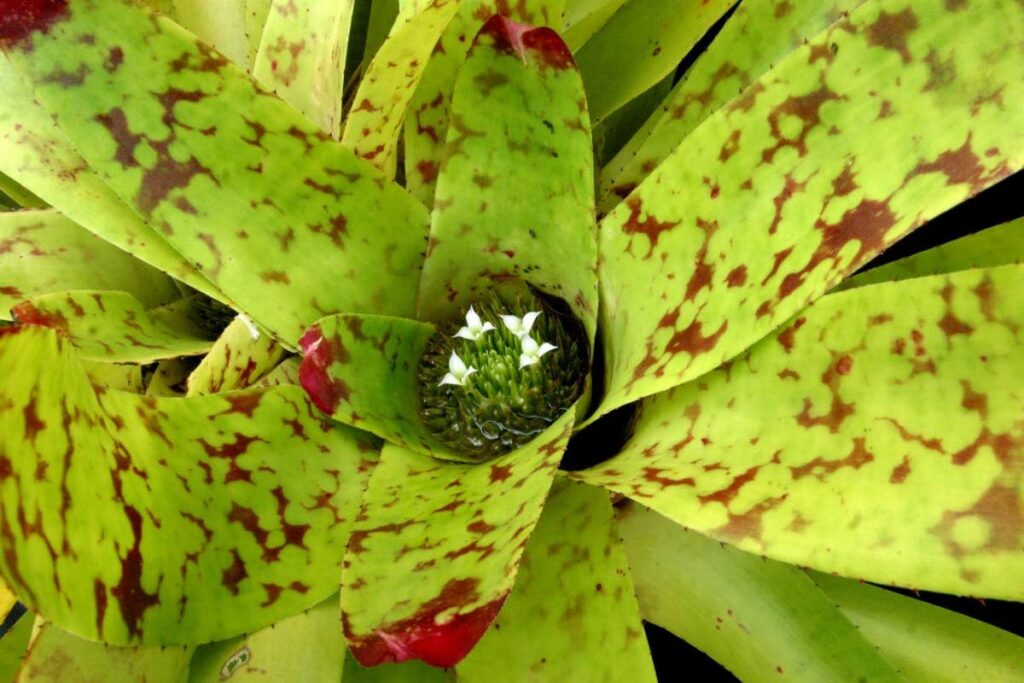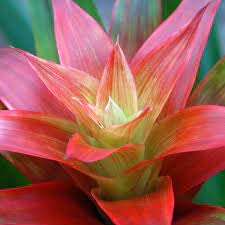Easy earth stars: growing cryptanthus bromeliads

KENDRA ROCKE
The cryptanthus bromeliad is one of the most overlooked beauties of the bromeliad family, but once you get to know them I am sure you will be captivated.
The cryptanthus bromeliad has its origin in Brazil, and as terrestrial natives they grow on the rain forest floors in natural habitat. A few are saxicolous (growing among rocks).
Commonly called “earth stars,” there are ten to 20 species in the Cryptanthus genus and over 1,200 varieties among them. With good care they can live for up to ten years. Most are mono-layered plants with little leaf overlap giving the appearance like stars.
Trinidad and Tobago has the perfect climate for growing earth stars, as they thrive well in morning or indirect sun, do well growing in the ground or containers with moderate humidity. They prefer more water retentive soil with proper drainage and are not suitable for mounting like most other epiphytic bromeliads.
Since I developed a passion for collecting and growing cryptanthus bromeliads a few years ago, I have found that there is a limited number of species or hybrids available in TT and as such commenced my exploration. For the collector some are rare and sometimes costly to obtain, but if you are an enthusiast you acquire via trade with other collectors or visits to international shows, where you keep an eye out for the new releases and rare treasures.

I must say, they are excellent plants for low maintenance garden spaces. Noticeable are the colour changes with different growing conditions that affect the appearance of the plant. My interest in collecting them heightened with the amazingly varied and beautiful foliage ranging from dark green and variegated to bright reds and pinks to silvery stripes.
I grow them close to the ground and have varieties with leaf span from five to 16 inches in my garden. They provide constant pops of colour to the landscape with minimal care.
Crypthanthus get its name from the Greek words meaning "hidden flower," although the white stemless flowers perched in the middle of the plant are not hidden at all. Crypthanthus, like other bromeliads, flower once during their lifetime, but reward the owner with offsets called “pups” (at the right time) to carry on the species. Once the pup is roughly one-third to a half the size of the mother plant they can be removed and potted, as such Bromeliads are considered as the plant that keeps on giving.
It’s good practice to label your plants, as it may save you from repeat purchase of the same plant. Earth stars have very interesting names and labelling them will assist the collector in identifying the plants as well as ease of reference when discussing with other collectors.
In my collection are the following: red star, pink starlite, zonatus, cafe au lait, yasira, Elaine, living colours, Betty, circuit breaker, black mystic, beuckeri, green eye gravy, ruby slippers, fudge ripple, strawberry flambe, wild cherry, argyrophyllus and much more, some I am still researching names to label. In June 2022, at the Bromeliad Society International Conference, Florida titled Living Colours, Michael Kiehl of Michael’s Bromeliads Inc was awarded the Warren Loose Best Crypthanthus Group Hybrid Award.
I believe this beauty will entice you, to learn more about earth stars.
How I grow earth stars:
Plastic is the best container for cryptanthus earth stars, as it retains moisture for longer. However, I also grow them in concrete and clay pots with very good results.
For soil mix I use pro-mix, potting mix, perlite, and a small portion of wood chips or orchid bark. This provides a loose and well aerated medium to prevent root rot and is suitable for my watering schedule.
Earth stars prefer a moderately damp environment, but do not leave them for long periods standing in water. Like most bromeliads they can withstand short periods of drought. I usually water three times per week in the dry season and twice per week in the rainy season for those not receiving the rain.

These plants don’t need regular repotting, possibly every two years is appropriate as the pups are easily removed without disturbing the mother plant. Best time to repot is March/April, moving up one pot size from the previous if needed.
Here are some of my care tips for growing and displaying earth stars in the garden:
• Location is everything! Different bromeliads prefer different levels of light, and they will let you know when they are not pleased. If foliage becomes bleached and burnt, reduce light. If plant is not producing colour increase light. Finding the right level of light makes all the difference in bringing out the glorious colours in these plants.
• Good air circulation is a common and vital need for all genera of bromeliads, ensure your plants are receiving adequate.
• Crypthanthus respond well to regular fertilisation. I use water soluble fertilisers nine-18-36, four-41-27 or 20-20-20 mixture diluted to quarter strength on rotation two to three times per month. For organic fertilising, water from the fish tank, it works wonders. At the time of potting I apply a slow release granular fertiliser to the soil mix, this will ensure the roots get the beneficial nutrient uptake at each watering.
• Ideas for displaying cryptanthus in your garden: landscaping in ground, garden dishes, terrariums and living walls, as individual plants or clumps.
• I have found these plants to be pest free, although I have heard they are susceptible to mealy bugs and scale. Maybe, due to my practice of preventative maintenance in my garden routine, I have not encountered any unwelcome guests on my earth stars.

If you are looking for easy to care for plants that will beautify your space in the ground or container, I welcome you to the world of cryptanthus earth stars, they are definitely a worthwhile inclusion to your garden.
Happy Gardening!
For further information contact the eastern Horticultural Club at 369-3310, 720-2698 or easternhorticultural@hotmail.com
The club meets on the first Saturday of every month (except public holidays) at the YWCA, Gordon Street, St Augustine.


Comments
"Easy earth stars: growing cryptanthus bromeliads"